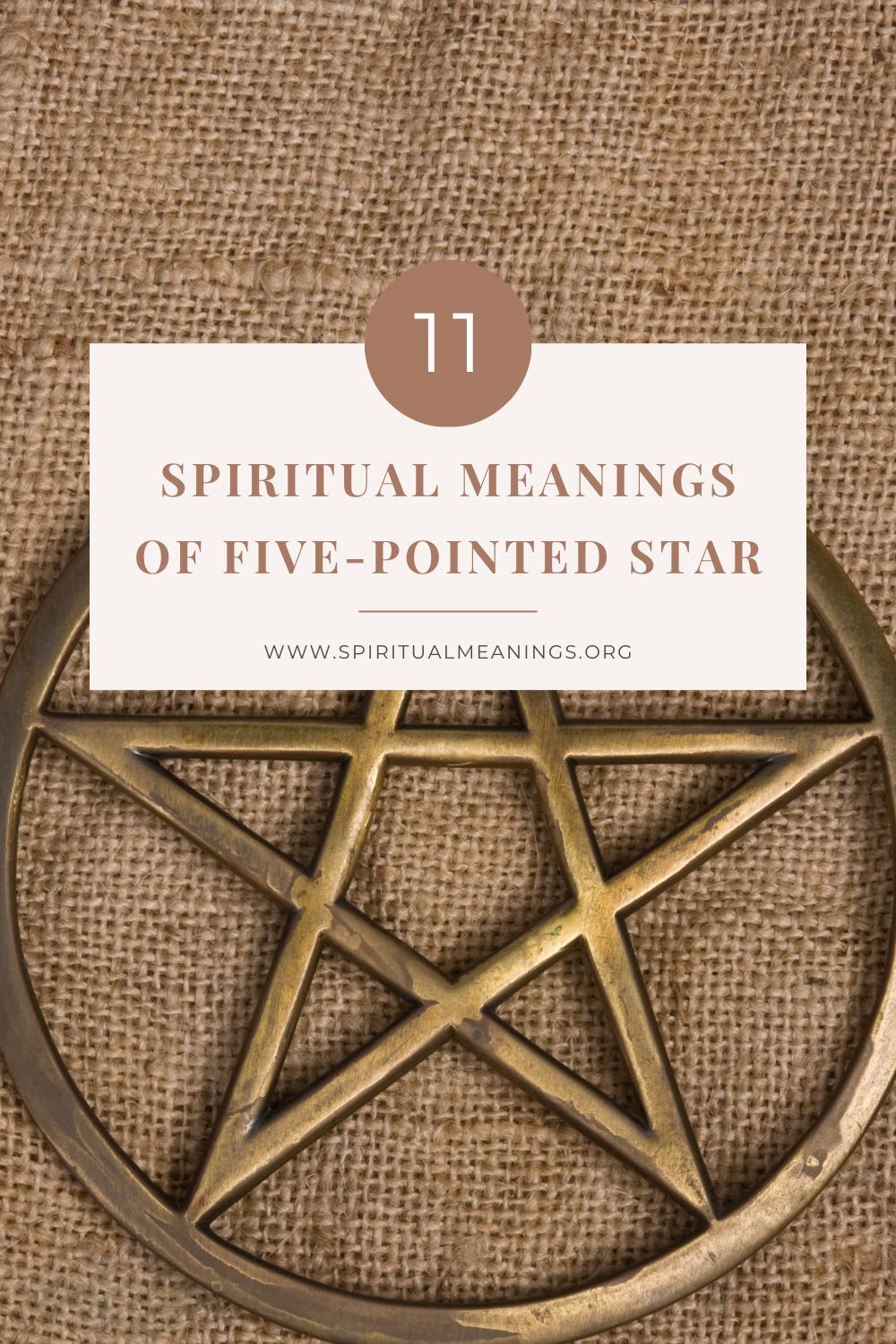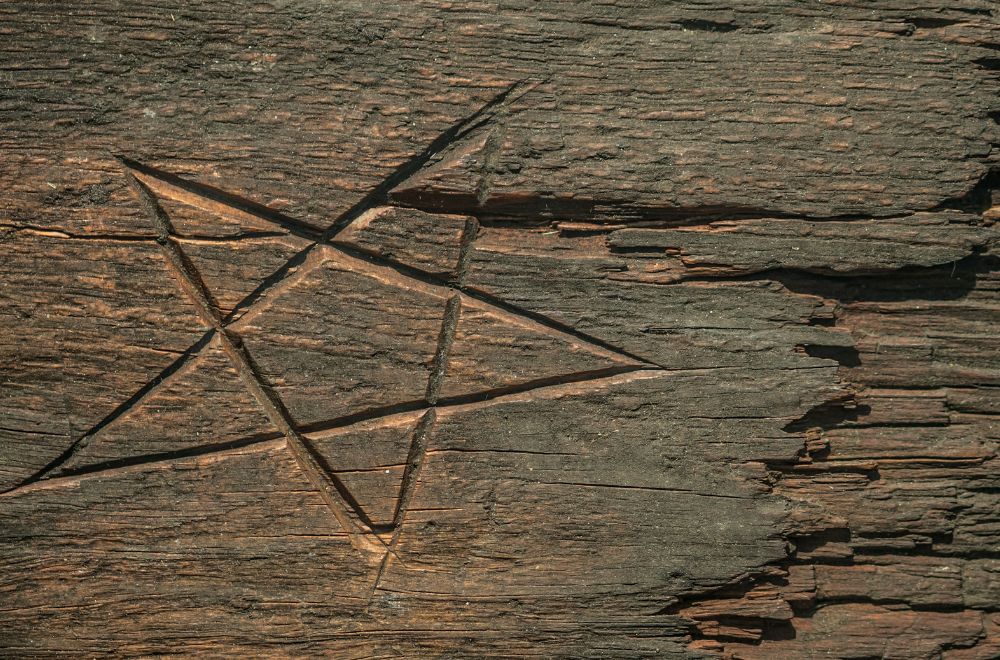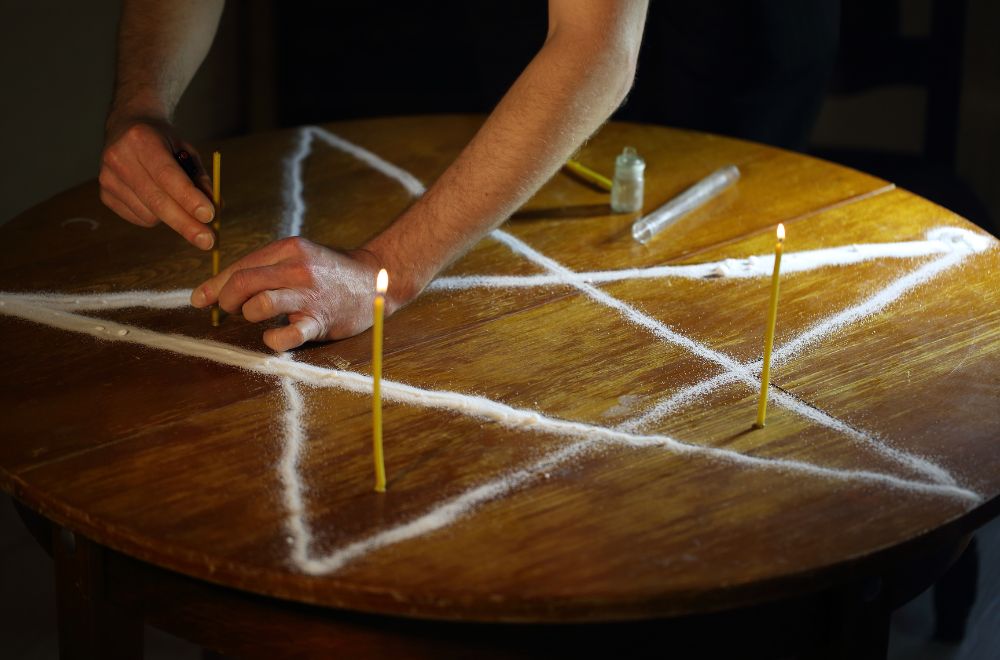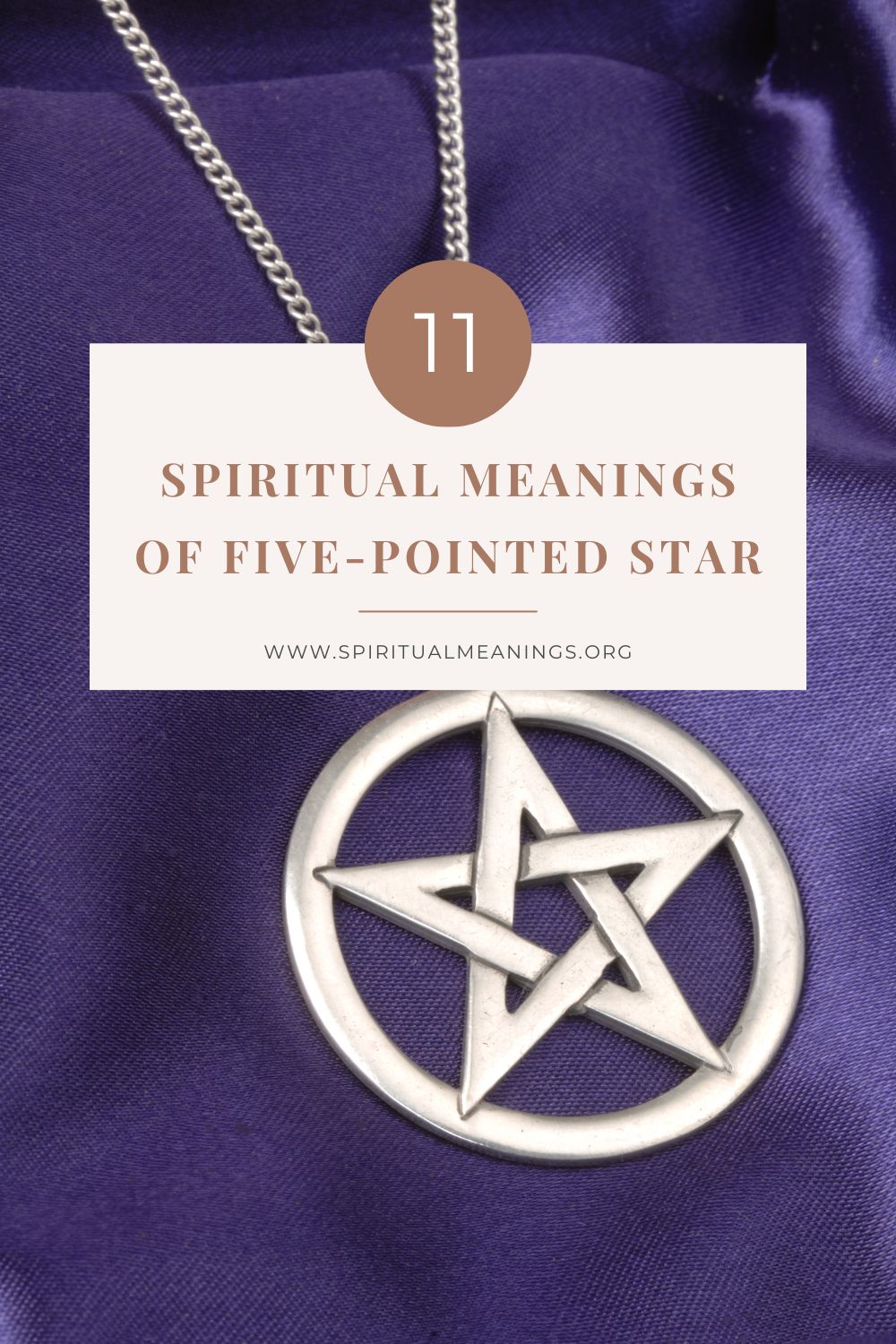Among the most widely used and easily recognizable of all religious and spiritual symbols, the five-pointed star – also known as the Pentagram – is found time and again in the artwork and imagery of countless cultures from time immemorial.
As such a common symbol, it has been given diverse signification and importance by those using it – and to help you understand more about what it can symbolize, in this post, we go into the details of five-pointed star spiritual meaning.
5-Pointed Star Spiritual Meanings (Pentagram)
1. In Christianity
In Christianity, the five-pointed star has – or at least had since it is no longer commonly used –deep religious significance in several ways.
One of the first meanings of this symbol was as a representation of the five wounds of Christ.
When Jesus was crucified, he received wounds to his hands and feet where he was nailed to the cross, and he was also stabbed in the side with a spear by a Roman soldier. The five-pointed star thus served as a reminder to Christians of these five wounds.
At the same time, the five points of the star also represented the five senses – through which, Christians should worship and honor God.
In a Christian religious context, the five-pointed star also appears in the 14th-century English poem Sir Gawain and the Green Knight.
In the poem, the shield of Sir Gawain is adorned with the star, which is said to be the symbol of King Solomon.
The number five here has deep significance, representing the perfection of Gawain in his five senses, five fingers, the five wounds of Christ, the five Joyful Mysteries of the Rosary and the five knightly virtues of generosity, friendship, chastity, chivalry and piety.
The five-pointed star also features in Christian art, usually with one point reaching upwards towards the heavens.
However, one interesting example appears on a window of the cathedral of Amiens in France with the point facing down.
Some people believe this represents Jesus descending to Earth from heaven – however, as we shall see in just a moment, a five-pointed star with this configuration also has connotations of the occult and even satanism.
2. In Judaism
As well as its Christian symbolism, the five-pointed star is also a symbol that appears in Judaism.
It has been seen as the symbol and stamp of Jerusalem since at least 300 BCE, and it is often surrounded by the five letters that spell the name of the city in Hebrew.
However, the blue Star of David that appears on the flag of Israel has six points, not five.
3. In satanism
When turned upside down, that is, with one point facing down and two facing up, the five-pointed star is recognized as a symbol of satanism.
While one point facing up represents the triumph of the spirit over the four elements of matter, with two points facing up, it represents the triumph of matter – or material and physical desires – over the spirit.
The two up-pointing arms are also seen as representing the horns of the goat of lust attacking the heavens.
Sometimes, the star is drawn like this with a goat’s head contained inside, in which case it is known as the Sigil of Baphomet.
The image incorporating a demonic goat also features in the logo of the Satanic Temple – although this movement isn’t actually a devil-worshipping satanic cult but rather one that seeks to limit the intrusion of Christianity into secular American life.
4. Ancient Sumer and Babylonia
The five-pointed star is a truly ancient symbol that has been used by various cultures around the world for millennia.
One of the very earliest known occurrences comes from the ancient Sumerian civilization where it was used in the city of Ur as the symbol of Ishtar or Marduk as long as 5,500 years ago.
The symbol also appeared in ancient Babylon where it was used as a charm to protect against evil powers.
Nowadays, it occurs in modern occultism, reflecting the ancient Babylonian use as a charm to ward off evil spirits and also representing the mind’s domination over the material elements.
5. Ancient Greece
The ancient Greeks also used the symbol of the five-pointed star in several ways.
One use was to represent the five corners where the titan Chronos placed the seeds that created the cosmos.
From the sixth century BCE, the star was also used by the Pythagoreans to represent mutual recognition, well-being, good deeds and charity.
They called the star hugieia, which means “health” and is also related to the English word “hygiene”.
6. Wicca and neo-paganism
In modern times, the five-pointed star is an extremely important symbol to Wiccans and neo-pagans.
Wiccans use the five-pointed star motif surrounded by a circle – in this form, it is known as a pentacle, and it represents the interconnectedness of all life.
The five points of the star represent the five elements of ether (or spirit), water, fire, earth and air, and these five elements are often evoked during rituals, especially when consecrating a magic circle.
According to Wiccan practices, the star appears with one point at the top, which represents the spirit uniting the other four elements, echoing many other beliefs related to the five-pointed star.
At the same time, Wicca practitioners also consider the pentacle to represent the human form, showing the head, the arms and the legs.
The pentacle is a key Wiccan magic tool and is often placed on an altar.
In the past, the use of the pentacle and wearing it as an emblem or jewelry was discouraged or banned in the United States due to its perceived connection to satanism.
However, in 2007, it was recognized as being a symbol of the Wiccan religion and is now permitted to appear on government-issued markers, headstones and plaques in honor of deceased veterans
7. In Chinese belief
The pentagram was first attested in China around 5,000 years ago when it appeared on artefacts from the Liangzhu civilization, a Neolithic jade culture that sprang up in the Yangtze River Delta area.
However, the most important occurrence of this motif in China comes from Daoist practice in which it is known as the Wu Xing (五行wŭ xíng), a system that was formulated during the Han dynasty in the second or first century BCE.
In Daoism, the Wu Xing represents the Five Agents of Five Phases, which are fire (火 huŏ), water (水 shuĭ), wood (木 mù), metal (金 jīn) and earth (土 tŭ).
It was also originally connected to the five major planets, Jupiter, Saturn, Mercury, Mars and Venus, with each of the planets believed to be involved in creating one of the Five Agents.
The Five Agents are interconnected through a “generating” or “creation” cycle and an “overcoming” or “destructive” cycle.
This idea underpins many other Chinese beliefs and can be found in Chinese cosmology, feng shui, traditional medicine, acupuncture, Chinese music and more.
8. In Freemasonry
The Freemason Order of the Eastern Star uses a pentagram as its General Grand Chapter logo, with each of the points bearing a different color.
White points down, representing the light of the star pointing down to the manger where the baby Jesus was placed, and the other colors used are green, red, blue and yellow.
9. The Baháʼí Faith
The pentangle is also used by the Baháʼí Faith as one of its main symbols.
Within the faith, it is known as haykal, which is Arabic for “temple”. This in turn comes from the Hebrew word hēyḵāl, which also means temple and specifically refers to Solomon’s Temple, connecting this symbol with the same image that once served as the symbol of Jerusalem.
According to Baháʼí beliefs, the star represents not only the temple but also the human body and most importantly the body of the Manifestation of God, a central concept within the Baháʼí religion.
10. Perfection
Another meaning of the pentangle is perfection due to its geometric shape and measurements.
It represents the simplest way to draw a regular star polygon and it also contains several examples of the golden ratio.
The natural perfection of this shape is a major reason why it has been used by so many cultures throughout history and into prehistory, and this is why it is also seen as a symbol of perfection.
11. The universe
Finally, the pentangle – or the pentacle when contained within a circle – is a symbol of the universe. Everything is contained within it, and everything is interconnected, reminding us of the nature of the universe and our place within it.
A common symbol that has a broad range of different meanings
As we have seen, the five-pointed star symbol has been used by many cultures dating back at least to the ancient Sumerians as well as to peoples living in what is now China many thousands of years ago.
It has been used to represent many things, including the occult, satanism and certain aspects of Christian belief. Often, it symbolizes the importance of the number 5, and it can also represent things like perfection, the universe and universal interconnectedness.











